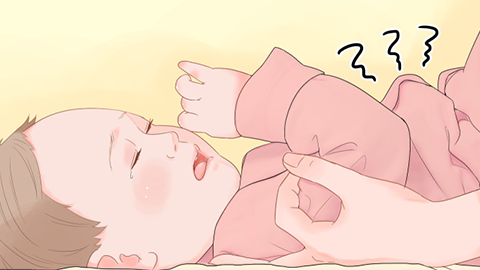What should I do if my baby has excessive eye discharge?
Generally, excessive eye discharge in infants may be related to factors such as incomplete opening of the nasolacrimal duct in newborns, inadequate eye hygiene, dietary factors, trichiasis (inward-growing eyelashes), and conjunctivitis. Parents can help alleviate the symptoms through methods such as massaging the eye area, maintaining ocular hygiene, adjusting the infant's diet, physically removing misdirected eyelashes, and medical treatments. It is recommended that affected infants seek timely medical consultation and follow the doctor's instructions for treatment. Detailed explanations are as follows:

1. Incomplete Opening of the Nasolacrimal Duct in Newborns: In newborns, the nasolacrimal duct may not be fully developed, preventing tears from draining properly and resulting in excessive eye discharge. This is a normal condition, and massaging the lacrimal sac area can help promote the opening of the duct.
2. Inadequate Eye Hygiene: An infant's eyelid skin is delicate; if not cleaned properly, secretions may remain. Use a cotton ball or gauze pad soaked in warm water to gently wipe the corners of the eyes and the base of the eyelashes to remove excess discharge.
3. Dietary Factors: An unbalanced diet, particularly excessive consumption of heat-inducing foods, may lead to increased eye discharge, often accompanied by symptoms such as constipation and dark-colored urine. Adjust the infant's diet to include more light, easily digestible foods rich in vitamins, such as fresh vegetables and fruits.
4. Trichiasis: Trichiasis refers to eyelashes that grow inward toward the eyeball, often associated with congenital entropion (inward turning of the eyelid). Infants may experience symptoms such as photophobia (sensitivity to light), tearing, and a foreign body sensation in the eye. This condition can usually be relieved by physically removing the misdirected lashes. If caused by congenital entropion, surgical correction may be necessary.
5. Conjunctivitis: Bacterial or viral infections causing conjunctivitis can result in increased eye discharge in infants, along with symptoms such as redness, swelling, and increased secretions. Parents are advised to use medications such as levofloxacin eye drops, disodium cromoglycate eye drops, or acyclovir eye drops under the guidance of a physician to alleviate symptoms.
In daily life, parents should closely monitor changes in the infant's symptoms and seek medical attention promptly, avoiding self-medication which may delay treatment.





